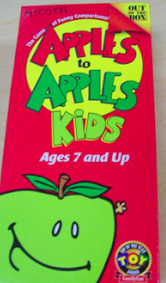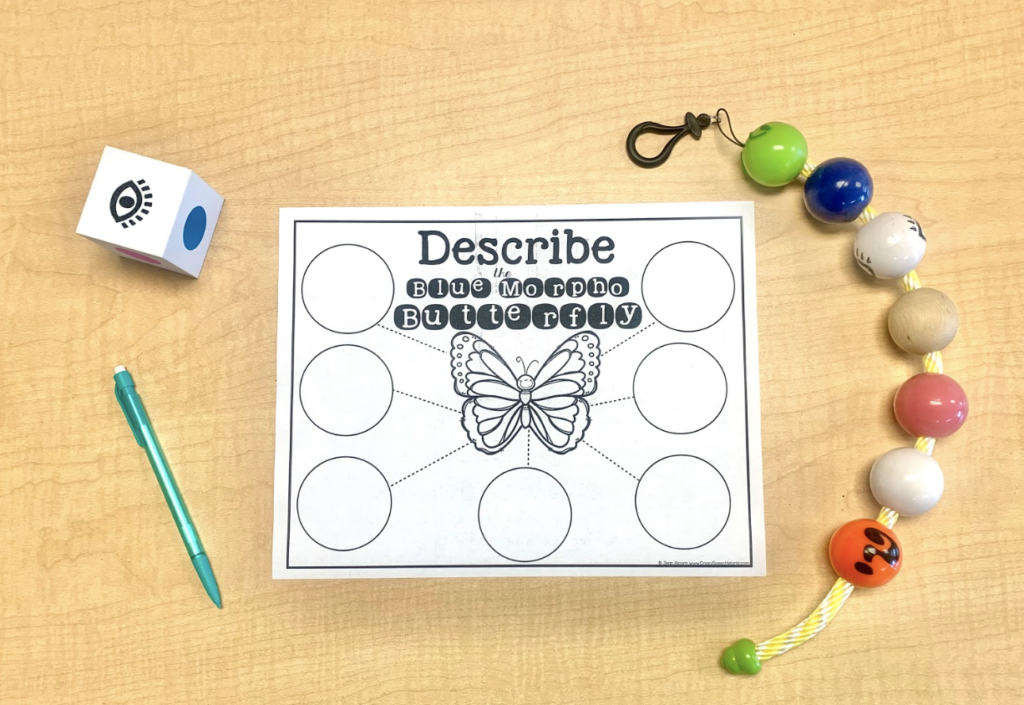Describing is an important skill for academic success, and these engaging activities will easily have your students building important vocabulary!
1. Using Photographs
Photos are such an easy and interesting way to target this skill! My students usually love animals, so this resource is perfect for them. One thing I really like about using photos is that you can also target things like inferencing skills or answering questions. We pair lots of visuals at the beginning of learning this skill to help students become independent.
2. Mini Objects
Mini objects have been all the rage in speech for quite some time now, and that's definitely because they are so versatile! Mini objects are perfect for working on describing because students can hold them in their hands and manipulate the object. You can sort them by attribute, play hide & seek, or set up a pretend store and ‘shop' for specific items. I scored these alphabet tubs from Lakeshore, but there are tons you can find from DinkyDoodads or Speech Tree Co or just collect them from other people!
3. Games
There are tons of games out there that you can use but my two favorites are Apples to Apples and Hedbanz.
There are several different versions of Apples to Apples and variations of play. Essentially, there are red apple cards which are nouns, and green apple cards, which are adjectives. In each round, the players try to find nouns that can be described by the given adjectives.
Hedbanz is where the one player wears a picture on their head that everyone but them can see, and then the other plays give clues about what the picture is. This one can be really hard for some students when they are working to improve language processing skills, so you might need additional visuals and scaffolding to help them be successful.
4. Sensory Bin I Spy
Sensory bins can be used here with mini objects or picture cards. You can hide them inside with whatever filler you have on hand and play I Spy! This way you can target specific types of descriptive vocabulary (ex. categories, size, shape, etc.) and ask the student to find something that matches your clue.
5. Expanding Expression Tool (EET)
The EET has been in my therapy tool bag for several years, it's a valuable resource for improving many language skills, but especially descriptive vocabulary.
You can pair it easily with any activity or book you are doing in your therapy sessions. I always like to use it to describe characters in a story and summarizing nonfiction texts.
Those are my 5 most fun ideas for working on descriptive vocabulary. Do you have any other great ideas for targeting this skill? Tell us in the comments!
Want to test out my favorite describing resource? Grab your freebie in the box below!














![Speech-Language Pathologists (SLPs) play a crucial role in children's language development. One often overlooked but highly beneficial area to incorporate into speech therapy sessions is print knowledge. Understanding the importance of print knowledge can enhance therapy outcomes and foster literacy skills in children. I recently worked on a paper with some colleagues about the importance […]](https://i.pinimg.com/236x/ce/7f/bd/ce7fbd4a90a9683531d8b43d60ee2a68.jpg)
![Are you gearing up to supervise Speech-Language Pathology (SLP) graduate students this semester? Wondering how to initiate a positive and welcoming atmosphere? Here's a glimpse into a simple yet effective approach: Welcome Email: Setting the Tone A few days before the semester kicks off, I initiate a warm welcome by sending out a thoughtful email […]](https://i.pinimg.com/236x/c9/6b/cc/c96bccc987e6dacdaaf50eb3db1b9c47.jpg)

